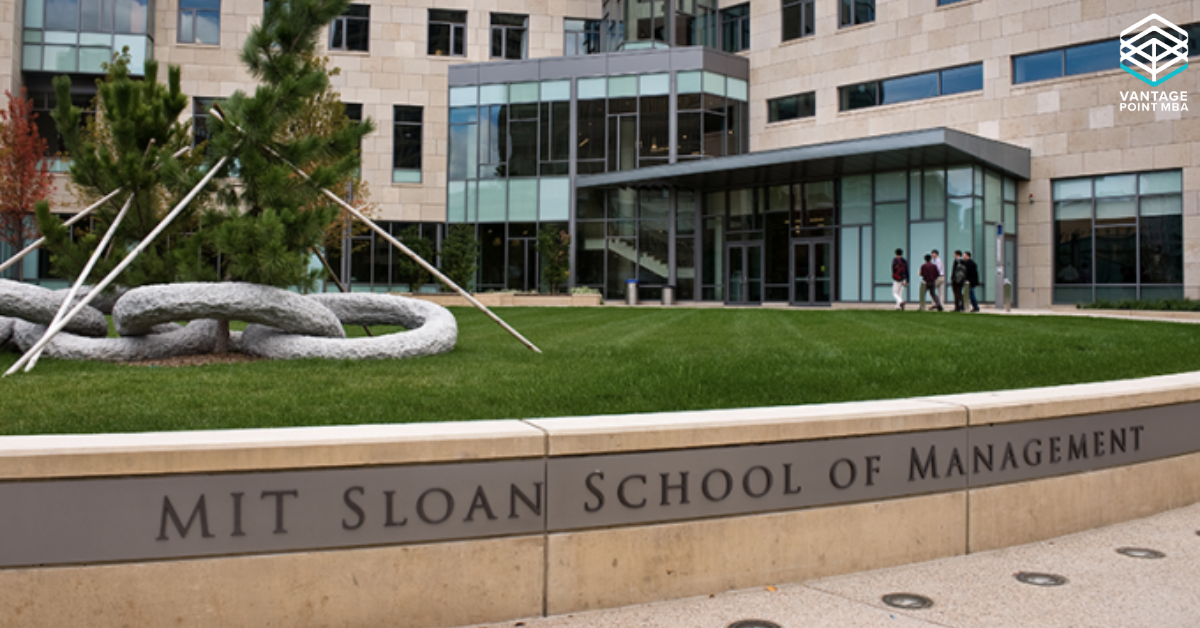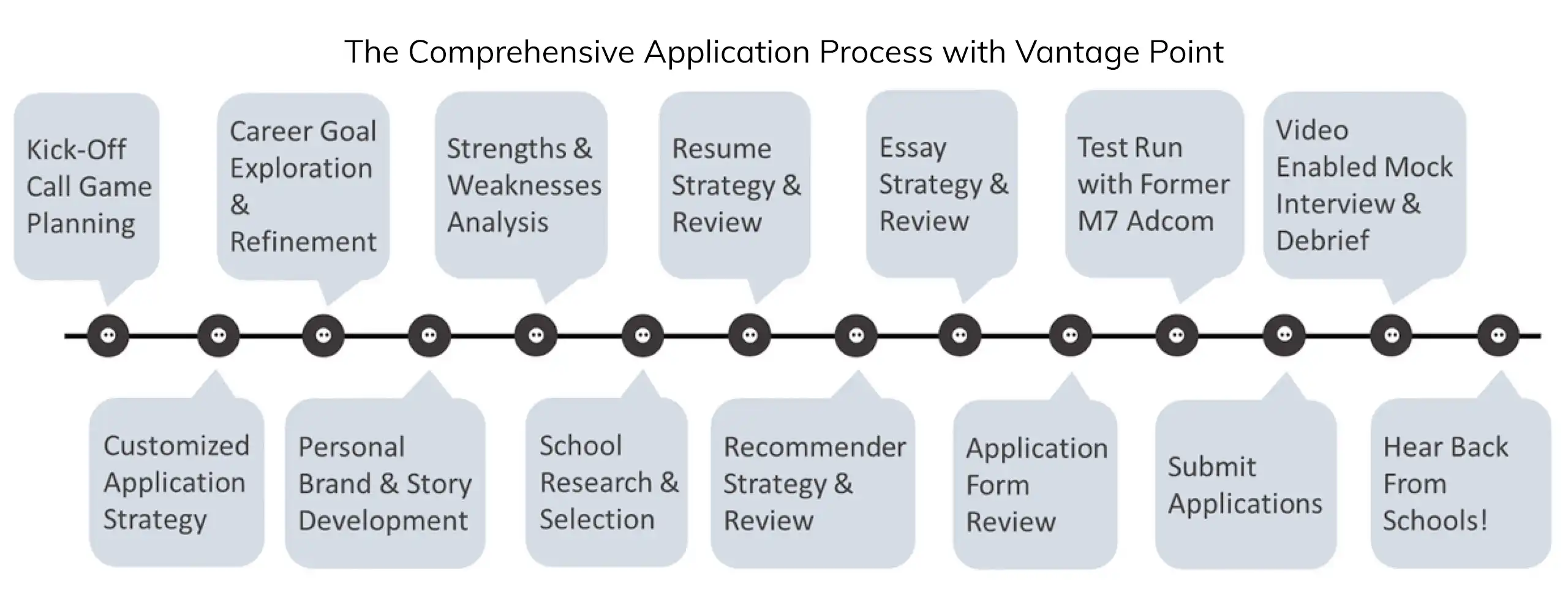2024-2025 MIT Sloan Cover Letter Advice & Application Tips

This article was originally published on January 7, 2021. It was last updated on August 1, 2024.
If you’re applying to MIT Sloan’s MBA Program, you’ve likely given thought to what you want to express in the required 300-word Cover Letter. Perhaps the trickiest thing about this unique application component is the word limit, which is incredibly short and forces you to have a laser focus on the elements of your personality / experience that demonstrate your fit with Sloan’s culture.
What MIT Sloan Asks for in its Cover Letter
For reference, here is the prompt they provide:
“MIT Sloan seeks students whose personal characteristics demonstrate that they will make the most of the incredible opportunities at MIT, both academic and non-academic. We are on a quest to find those whose presence will enhance the experience of other students. We seek thoughtful leaders with exceptional intellectual abilities and the drive and determination to put their stamp on the world. We welcome people who are independent, authentic, and fearlessly creative — true doers. We want people who can redefine solutions to conventional problems, and strive to preempt unconventional dilemmas with cutting-edge ideas. We demand integrity and respect passion.
Taking the above into consideration, please submit a cover letter seeking a place in the MIT Sloan MBA Program. Your letter should conform to a standard business correspondence, include one or more professional examples that illustrate why you meet the desired criteria above, and be addressed to the Admissions Committee (300 words or fewer, excluding address and salutation).”
How to Write the Best MIT Sloan Cover Letter
Pay close attention to the language of this prompt because it helpfully describes the qualities Sloan seeks in a successful applicant. Many of these are similar to those sought by all of the top MBA programs – intellectual strength, track record of accomplishments, and ability to bring dimension to the cohort. However, the critical things to note here are those that make Sloan different – its orientation towards an independent mindset and creative problem-solving. They don’t just want someone who ‘got the job done’, they want the person who redefined the problem and came up with a solution no one had thought of before.
Practice the Art of Omission
With only 300 words at your disposal, you simply don’t have space to separately demonstrate you possess each of the more basic traits. For these, utilize the other components of the application – your GMAT/GPA can help prove your intellect, your resume showcases your history of accomplishments, and your video essays should highlight what makes you unique. In the cover letter, make a solid case – supported by one or maybe two stories – that you are an innovative thinker who isn’t afraid of rocking the boat to enable progress. The ideal story to use is career-focused (given the tone of the prompt), fairly recent, and has a connecting thread with how you will contribute at Sloan if admitted.
Make the Case for “Why You?”
That said, you do need to use this vehicle to provide a higher-level ‘pitch’ of yourself to the adcom. A structure I’ve seen be consistently successful is one that is three paragraphs, maybe four. In the first paragraph, without simply restating your resume, you can lay out the differentiating or notable experience you bring to the table. Then in the second paragraph (or perhaps two paragraphs if needed), dive into a story that supports this ‘brand’ and hits on the Sloan-specific qualities mentioned above. Finally, in the last paragraph, drive the argument home by asserting why these qualities will make you an asset to the Sloan community.
A Successful Sample MIT Sloan Cover Letter
To demonstrate this structure in practice, here is an example from a past client (privatized, of course):
“Dear MIT Sloan Admissions Committee,
Through my role at [consulting firm], and my experience driving positive change in my community first as a student mentor and now as a founder of a [mentoring program], I know that I will be able to make a significant contribution to Sloan. This is rooted in my experiences learning to manage increasingly larger teams, leading projects in eight countries and enhancing both the product offerings of my company and traditional mentoring frameworks.
As a self-described quantitative person who went from a trading career out of college to working in consulting and rising to manage my firm’s [industry-focused] practice, I’ve had the opportunity to learn not only how to leverage data to drive business strategy but also how to manage and collaborate with people with different backgrounds. For example, after seeing a need to extend our product offering to include capabilities in emerging technologies, I proactively led a three-person team to create a research product that provided clients with capability maturity assessments in three areas: digital, data analytics, and cloud. To action this, I worked with [firm] experts and our existing clients to build a framework, scope and go-to-market strategy for the new products. To date, we have delivered research to over 30 clients, supported four […] cases with data and hosted two roundtables that brought together heads of technology from over 20 firms to discuss the findings.
I am confident that the breadth of my experience will allow me to succeed at Sloan while also bringing a unique perspective to the school. The opportunity to be involved in innovation periods and the Entrepreneurship & Innovation Track will provide the skills needed to transition into a bank’s innovation team and ultimately create a FinTech firm.
Respectfully,
[name redacted]”
Sloan MBA Essay Guidance – Video Statement Tips
In addition to the cover letter, Sloan asks you to submit two 60-second video statements.
Video 1:
“Introduce yourself to your future classmates. Here’s your chance to put a face with a name, let your personality shine through, be conversational, be yourself. We can’t wait to meet you!“
Since your cover letter will likely be professionally focused, the video statement is a great place to share who you are outside of work and the unique attributes you would bring to the class. Specific content will vary from person to person of course, but remember that Sloan values independent thought, fearless creativity, and passion. What about you hits on these notes?
Perhaps the most important thing to do to ensure you submit a strong video statement is practice. You know the prompt and can record and re-record yourself until you are satisfied with the output. And so can the competition! So, give this application component the thought and attention it deserves to ensure you stand out.
Video 2:
“All MBA applicants will be prompted to respond to a randomly generated, open-ended question. The question is designed to help us get to know you better; to see how you express yourself and to assess fit with the MIT Sloan culture. It does not require prior preparation.
Video Essay 2 is part of your required application materials and will appear as a page within the application, once the other parts of your application are completed. Applicants are given 5 seconds to prepare for a 60-second response.”
Video essays with randomized questions are becoming a more popular part of the application process. You can expect to have a few different buckets of questions that come up.
- #1: Behavioral questions
- #2: Questions about your personality or interests (such as What is your favorite book and why?)
- #3: MBA-specific questions (such as Why MBA? or How you will contribute to the school’s community?)
For any question, remember that the most important thing is to explain the “why” instead of the “what”. Be concise and clear, but also show your enthusiasm. Overall, you can prepare and practice any questions you would expect in a formal Zoom or in-person interview setting for this randomized video essay.
We hope that these tips help you get your Sloan application across the finish line! If not, we’d be happy to help. Reach out to schedule a free consultation with our top-rated team of MBA admissions experts.
Katie is a passionate mentor and coach, helping her clients craft a unique, compelling story by leveraging her experience as a corporate executive, alumni interviewer, and campus recruiter. Before completing her MBA at Kellogg, Katie spent five years in banking where she learned practical finance skills as well as how to operate in a demanding, high pressure environment. She pursued an MBA in order to transition to an industry role where she could utilize her finance knowledge to drive change within an organization. Post-MBA, she worked in finance and strategy for a leading CPG firm, progressing to an executive role leading the finance function for a $2B business segment. Her experience managing diverse teams led to a passion for developing others. In addition to her day-to-day responsibilities, she led her firm’s MBA recruiting efforts and served as an alumni admissions interviewer for Kellogg.




